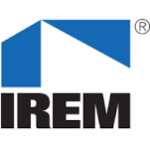Hi, there! Joe White here from Grow Property Management, your trusted property management company in Philadelphia.
I wanted to share a recent experience I had with a tenant move-out situation that raised some important points for landlords and property managers to consider. One of my tenants just moved out of a property we manage in Filter Square, a nice area, and this was one of the more upgraded properties in our portfolio. These tenants had quite a few resources, and although they originally planned to stay short-term, they ended up living there for a couple of years.
During their tenancy, they made a number of substantial improvements to the property, things like replacing carpeting and other updates that definitely added value. All of these improvements had to be approved through me, as their property manager. So it wasn’t like they were making unauthorized changes. They followed the proper process, submitted their requests, and I gave them the green light. The upgrades they made were generally positive and enhanced the property, which we appreciated.
Fast forward to their move-out: this is where things got a little more complicated. Now it’s time to assess move-out charges, and naturally, as is sometimes the case, there’s a disagreement. From their perspective, they acknowledge that the unit wasn’t returned in perfect condition. They even admitted it wasn’t great, it needed professional cleaning, had areas that needed touch-up paint, and some wear that went beyond normal usage. But their argument was: “Hey, we left the property better than how we got it. We made upgrades and improved its overall condition.”
I completely understand their viewpoint, and I think it’s a fair point to raise. However, from my side, and from the property owner’s side, the fact remains that when they returned the property, it required work to be rent-ready again. Yes, they added value during their time there, but that doesn’t negate the fact that the unit needed cleaning and repair, beyond what’s considered normal wear and tear.
In our policy, any charges taken from a security deposit have to be directly tied to damage or cleaning beyond normal wear and tear. And keep in mind, since they lived there for a few years, we’re very fair in what we consider normal. Things like nail holes, small scuffs on the wall, some wear on the flooring, all that is expected. Even some dings or scuffs near the front door, while they’re not ideal, are totally acceptable in my view. I always lean toward being tenant-friendly in my assessments. I ask myself: would I be upset if this were my own home? If the answer is no, I consider it normal wear and tear.
But when we’re talking about things like significant holes in the wall, stains that require deep cleaning, or wall damage from TV mounts that went beyond a simple install, that’s where we draw the line. For example, I personally don’t see TV mount damage as a big issue, that’s pretty standard now. Most people have flat screens and want them mounted. That kind of thing doesn’t usually get flagged. But if a wall was damaged from a botched install or never repaired when they left, that does move into the “beyond normal wear” category.
Ultimately, if this ever went to court, the decision would come down to what a judge sees as fair. I always keep that in mind during assessments. We want to be reasonable but also protect the owner’s interests.
So, back to this case: when these tenants moved in, we gave them a clean, fully functional property. It was tenant-ready, lights working, space clean, everything in good condition. When they left, they returned it in a condition that required us to spend over $1,200 to bring it back to rentable condition. That included deep cleaning and wall repair. So even though they made improvements during their lease, those improvements weren’t a substitute for maintaining the place or returning it clean and undamaged.
Another key point here is that those upgrades weren’t initiated by the owner, they were approved, but not requested. The owner didn’t decide, “Hey, I want to replace the carpet or repaint this.” The tenants asked, and we said yes. That distinction matters. As an owner or manager, it’s not unreasonable to say: “Thanks for the improvements, but I still shouldn’t have to pay to fix the damage you caused on the way out.”
If you’re a landlord facing a similar situation, my advice is this: if you feel like giving a tenant a break because they were generally good or went above and beyond in other ways, that’s your call. I’ve done it before, and I’m not going to tell you not to. But you should also feel confident in charging appropriate move-out costs if the return condition of the property warrants it. Upgrades don’t cancel out damages or cleaning needs. They’re two separate things.
And here’s another important factor to consider: once you bring in a contractor to do something like patch a big hole, fixing other small wear and tear becomes almost cost-free. For example, if a contractor is already there to patch a three-inch hole in the wall, fixing nearby nail holes or paint scuffs is just seconds of extra work. They’ve already opened the can of mud, they’ve got the tools out. It doesn’t significantly add to the cost. So the owners actually benefit more from bundling in those repairs at once, and often those smaller issues get addressed anyway, even if we don’t charge tenants for them.
That’s another reason we lean slightly in favor of the tenant when assessing these things. It helps us stay fair and minimizes our chances of running into disputes. But again, fairness works both ways. If the tenant causes damage, they’re responsible, simple as that. That’s what security deposits are for.
So, in the end, even though this tenant had improved the property and we’re grateful for that, we still charged them for the necessary cleaning and repairs. The upgrades they made were beneficial, but the cost of getting the unit back to rent-ready condition was still on them, because of the condition in which it was returned.
I hope this situation helps others understand how to approach move-out inspections and charges fairly and professionally. It’s a balance, you want to reward good tenants and respect the effort they put into your property, but you also have to protect your owners and make sure the property stays rentable without unnecessary costs falling on the wrong party.
Anyway, I’m just a humble property manager trying to share what I’ve learned. Hope this was helpful, and as always, happy rental property investing.






